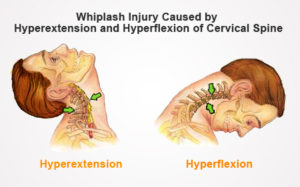
A whiplash is a minor injury to the neck that causes pain. It can be caused by either your upper or lower neck twisting violently forward and then back again, or vice-versa
The injury, which still remains poorly understood, generally involves the discs, muscles, nerves, tendons, and vertebrae in your head. Whiplash occurs most often as a result of collisions, falls, sports injuries, flying into wind or other objects, and being thrown from your car.
Symptoms of whiplash can include neck stiffness, neck pain, headaches, dizziness, blurred vision, nausea, depression, memory loss, difficulty concentrating, irritability, fatigue, numbness or tingling sensations, and blurred vision. While some symptoms may be present before you experience whiplash, others may be present after you have experienced the injury.
If you have ever experienced whiplash, you may feel that you are always in pain, even when you're resting. However, you should not let this concern you because your symptoms will subside when you are resting. Many people experience mild or moderate symptoms such as neck stiffness. They may also experience headaches, dizziness, blurred vision, nausea, headache and migraine, numbness, tingling sensations, blurred vision, fatigue, depression, and memory loss. However, these symptoms may last for days or weeks depending on how severe your injury is.
It may be helpful to undergo physical therapy if your symptoms do not disappear once you rest. Physical therapy is important to help with rehabilitation, including exercises, relaxation techniques, posture, and postural adjustments. You can receive help through the use of massage, chiropractic, physiotherapy, physical therapy, acupuncture, massage, and other therapies that may improve the way your body feels and works.
Your rehabilitation program may include physical therapy, or physical therapy and massage combined. Some physical therapists specialize in treating whiplash and other neck injuries. With the combination of these two, the physical therapy is designed to strengthen and rehabilitate your body's soft tissues, muscles, joints, and ligaments. It will also help with muscle spasms and muscle spasm retraining.
Therapy is very important to help with the healing process. In order to treat whiplash, you must focus on what caused the injury. This may help you understand why you got the injury in the first place, so that you can prevent it from happening again.

Many people opt for spinal decompression to alleviate the pain. This type of therapy uses machines to decompress the spine. This helps to relieve pain and reduce inflammation, making it easier for you to move the injured part of your body. This method is not recommended for everybody but may be suitable if you can't sleep because of the pain you experience.
If the pain is unbearable and does not go away, you may need to seek medical attention
The sooner you get help, the sooner you get the help you need. Whiplash is a serious condition, so it is best to seek medical attention.
Recovery can be a slow process and can take months or even years. Some patients may return to work soon after surgery, but others require ongoing follow-up treatment such as exercise, massage, and physical therapy.
For a full recovery, it is important to avoid activities or tasks that could cause additional harm to your body. These include playing sports, driving, handling heavy equipment, driving, and even climbing. You should also avoid any activities that put stress on your neck, such as lifting heavy objects, performing repetitive tasks, and twisting.
It is also recommended to wear a headrest while driving. Head injuries can lead to neck injuries, and if you have a whiplash injury, it can also lead to whiplash injuries.
Rebuilding a whip can be difficult, especially when dealing with pain and discomfort. If you find that your symptoms persist and are getting worse, you should seek medical attention and information at value.co.th.